Sierra SPR-32 Pro offers high-throughput SPR analysis of molecular interactions ranging from initial screening to detailed kinetic characterization.
The high throughput, offering a range of eight channels/four spots, allows 13,200 interactions in 24 hours.
Highlights
Customized for Complicated High-Throughput Applications
High Throughput
Over 4400 samples/day producing more than 13,200 control subtracted binding responses for applications like epitope characterization and antibody, fragment, or small molecule screening.
Flexible
Select any combination between 1 and 8 needles for the best flexibility, performance, and range of applications.
Control and Sensitivity
In-channel control halves the number of assay cycles needed and increases data quality by avoiding possible changes among several sample preparations.
Ease of Use
Sierra SPR control software integrates hardware flexibility using a user-friendly drag-and-drop method editor.
Features
Combining Industry-Leading Performance with High-Throughput SPR Analysis
New Possibilities in Real-Time, Label-Free Detection
Main system features allow flexible instrument functioning and powerful assay development while maintaining system throughput, performance, and detection sensitivity.
- 32 individually addressable detection spots include eight flow cells with four spots to analyze more controls and targets per injection
- Separate needle control has the potential to process from 1 to 8 samples per injection
- Quick transitions between solutions for precise kinetics in different sample matrices are facilitated by continuous flow hydrodynamic isolation microfluidics
- Time and samples are saved by flexible buffer configuration
- Easy-to-use software provides high-throughput SPR data analysis and collection

Image Credit: Bruker Life Sciences Mass Spectrometry
Breakthrough SPR Detection for Sensitivity
The SPR+ detector gets its sensitivity from integrating imaging surface plasmon resonance (SPRi) with high-speed optical scanning and a high-intensity laser light source. This arrangement aids the utmost sensitive imaging of comparatively large two-dimensional sensor arrays. The light source intensity allows the use of a high-speed camera, which eventually collects more resonance measurements for every scan.
The net result is a signal-to-noise ratio of 0.02 RU (RMS) and enhanced precision when quantifying small response changes, often observed for small or fragment molecule binding experiments.
Automated High-Throughput Sample Analysis
Multiple user-defined configurations can maximize high-throughput SPR analysis using 32 detection spots available in each analysis cycle. This can comprise 31 control-subtracted injections, a maximum of three in-line controls, or four targets per channel. The autosampler is compatible with a broad array of 96- and 384-well microtiter plates and the dual-plate sample deck with a common rack position enables increased automation.
When fitted with an optional plate handling robot, the instrument can perform in high-throughput mode and examine over 4400 samples/day, leading to over 13,200 control-subtracted interactions.
Sierra SPR®-32 Pro can be seamlessly combined into an automated scheduling software through API.
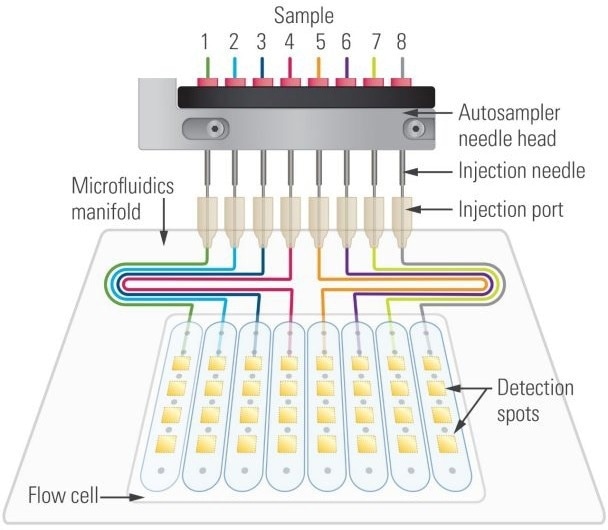
High-throughput SPR Analysis with 31 targets and 1 control surface. Image Credit: Bruker Life Sciences Mass Spectrometry
Frame Inject Feature for Multi Buffer Analysis
The eight syringe continuous flow buffer is a robust assay optimization and development tool. It aids high-throughput SPR analysis in various conditions, which comprise different salt, pH, solvent, or detergent concentration. Concurrent multi-buffer analysis saves reagents and time while enhancing information throughput.
Benefits
High Throughput with Performance
The Sierra SPR®-32 Pro system is a powerful tool for high-throughput applications, such as epitope characterization and antibody, fragment, or small molecule screening.
Concurrent injection of up to eight samples enables high-throughput assay optimization and development and rapid quantitative analysis of both purified and raw samples. Samples are addressed by hydrodynamic isolation (HI) continuous flow microfluidic technology as flowing streams onto the sensor array. This enables the processing of eight samples on a standalone system, which could be increased to over 4400 samples/day via optional plate handling robotics.
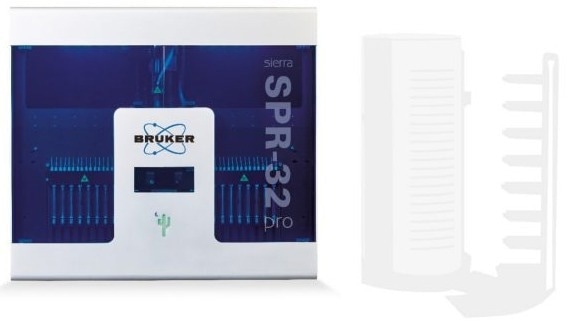
Image Credit: Bruker Life Sciences Mass Spectrometry
Flexibility Optimizes Productivity
Individual needle control (INC) regulates applications' flexibility, performance, and scope while saving materials and time when throughput is unnecessary.
Using frame inject, a maximum of eight buffers can be used concurrently in the instrument. The capacity to assess varied ionic strength, pHs, solvent or detergent concentration, and the effect of inhibitors or co-factors in a single assay leads to more streamlined and optimized assays that eventually boost productivity and throughput.
The four-sensor per channel design offers the utmost flexibility for control analysis, simultaneously maintaining throughput for the most complicated analyses.
.

Image Credit: Bruker Life Sciences Mass Spectrometry
Assay Control and Sensitivity
Four independently addressable detection spots are configured in each of the eight channels of the Sierra SPR®-32 Pro system. Samples can be concurrently assessed on a maximum of three control surfaces and also on the active surface. Early identification of nonspecific binding to control proteins is crucial in many SPR applications.
In small molecule characterization and screening, binding to serum proteins, such as BSA and HSA, is an important part of drug development. The added in-channel control halves the number of assay cycles needed and enhances data quality by avoiding possible changes among several sample preparations.
The SPR+ detector integrates imaging SPR (SPRi) with high-speed optical scanning and a high-intensity laser light source. The outcome is enhanced signal-to-noise and increases precision while quantifying small response variations.
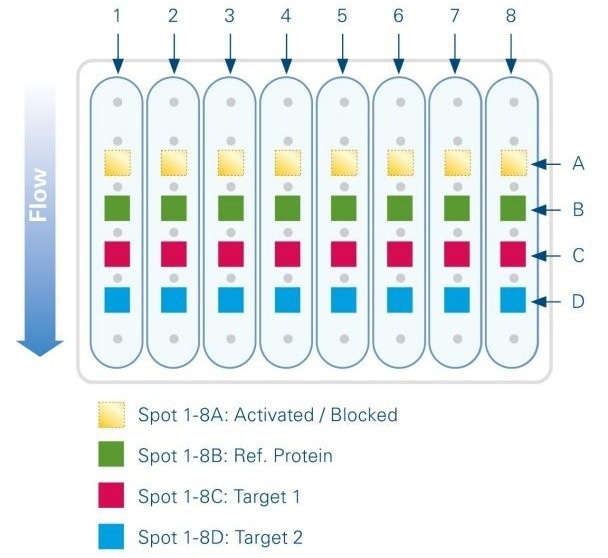
Image Credit: Bruker Life Sciences Mass Spectrometry
Ease of Use
The Sierra SPR control software offers the ideal solution for all users, be it the first assay development or pre-defined method templates. It integrates the flexibility of the hardware with a user-friendly drag-and-drop method editor. A well-defined plate and method library backs personal workflow structuring and the data view enables real-time flow cells’ visual monitoring.
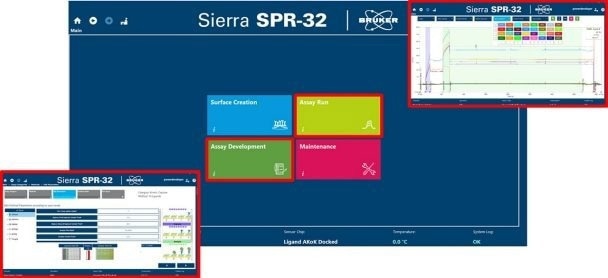
Image Credit: Bruker Life Sciences Mass Spectrometry
Consumables
Component
- High-capacity amine sensor
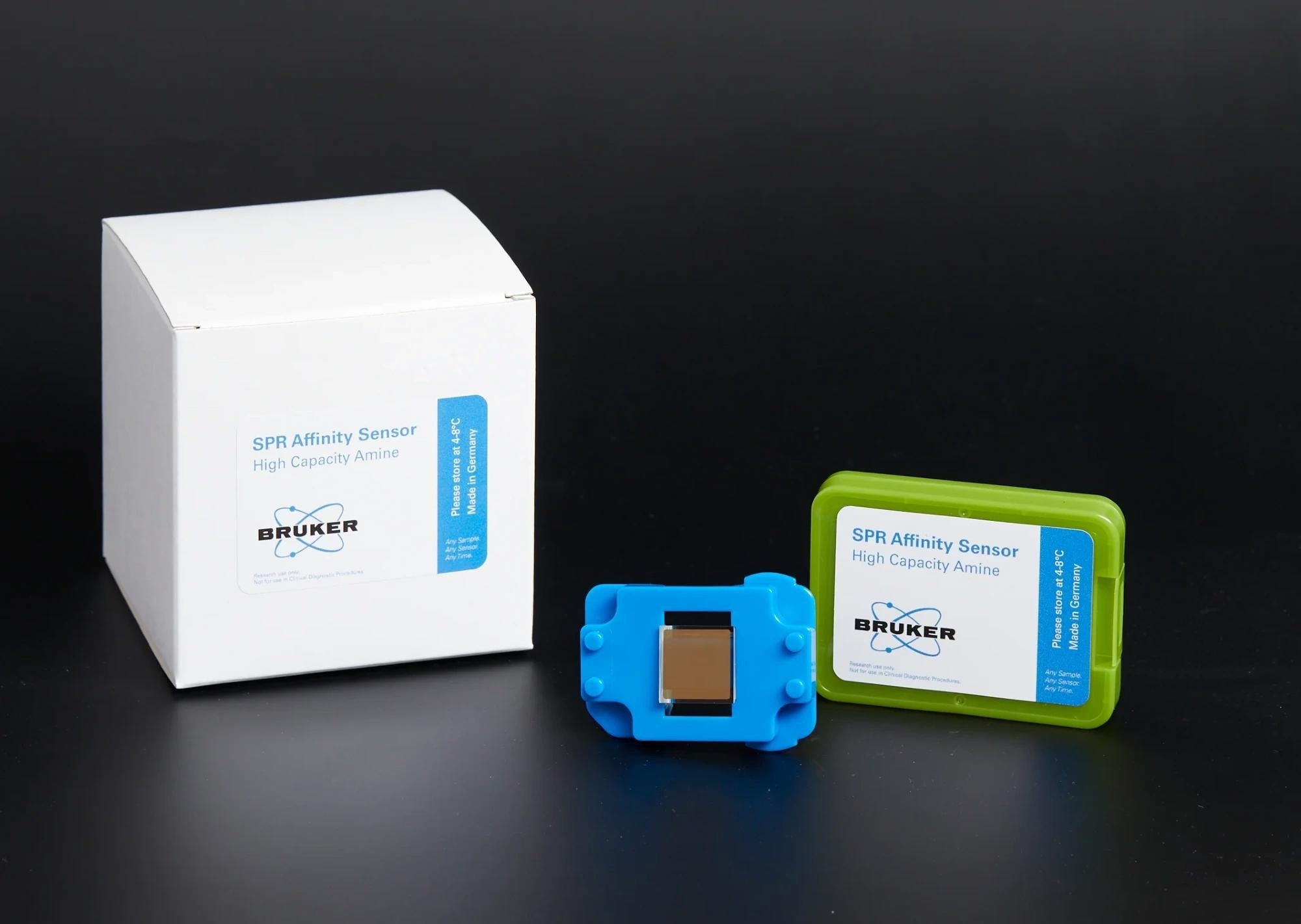
Image Credit: Bruker Life Sciences Mass Spectrometry
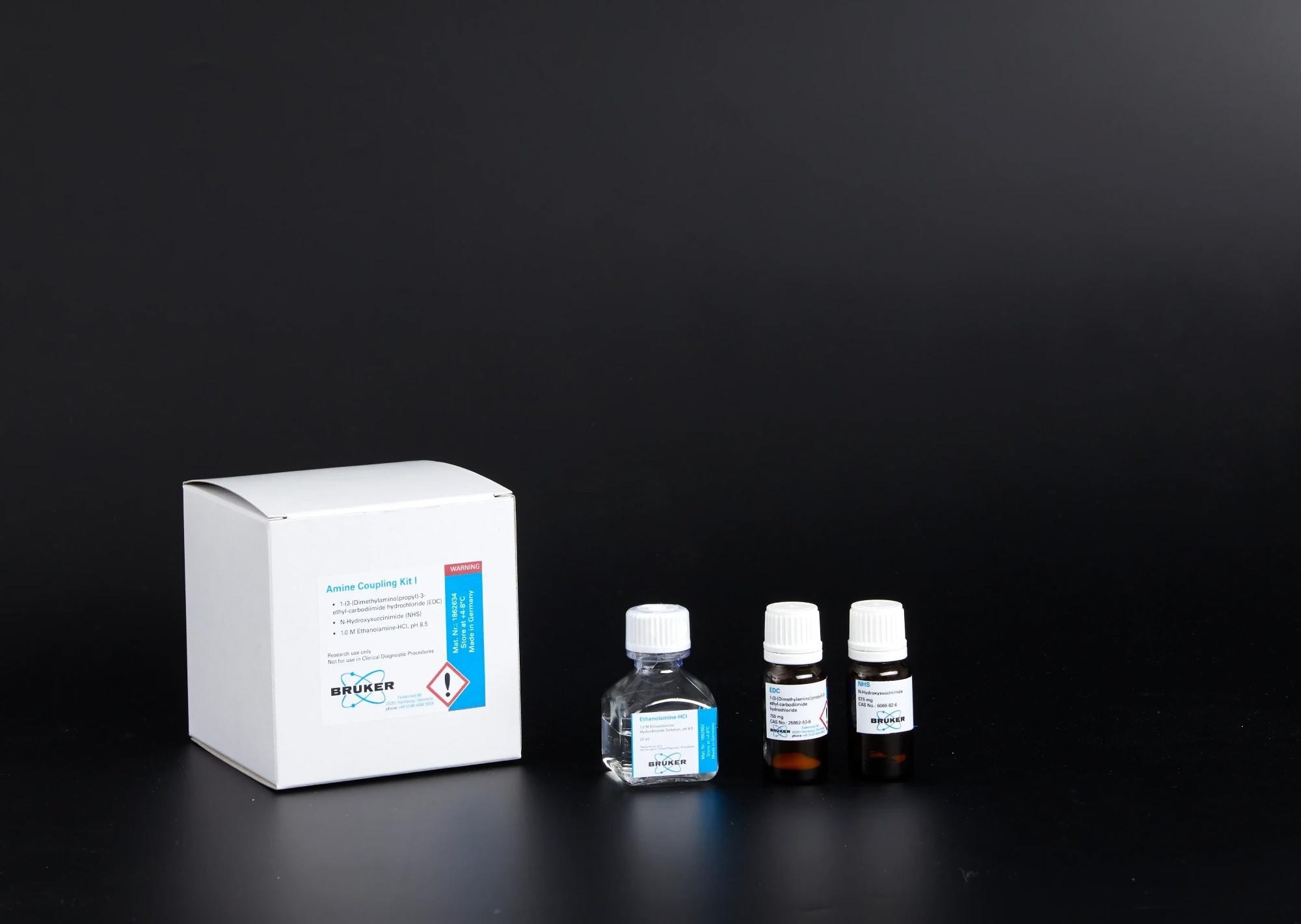
Image Credit: Bruker Life Sciences Mass Spectrometry

Image Credit: Bruker Life Sciences Mass Spectrometry
Applications of Surface Plasmon Resonance
Tackling Challenging Targets with High-Throughput Biophysical Screening at Novartis
How automation, multiplexing, and automated data analysis with Genedata Screener take SPR a step ahead can be found in this real-life example.

Image Credit: Bruker Life Sciences Mass Spectrometry
How to Influence Ligand Density Using Amine Coupling
Identifying the perfect immobilization level to achieve ideal kinetic measurements is crucial. The influencing parameters on varied example targets are examined here.
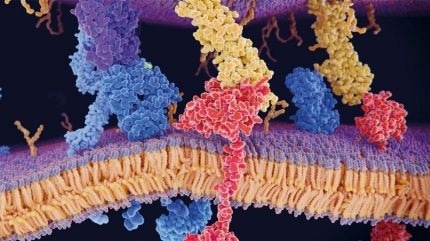
Image Credit: Bruker Life Sciences Mass Spectrometry
Screening and Characterization of Small Molecule Binding to Protein Targets
Real-time, label-free (RT-LF) analysis by SPR detection is an efficient instrument for the biophysical definition of small molecule drugs and drug candidates.

Image Credit: Bruker Life Sciences Mass Spectrometry
Screening and Characterization of Biotherapeutics
Real-time, label-free (RT-LF) analysis by SPR detection is an efficient instrument for the biophysical definition of protein therapeutics.

Image Credit: Bruker Life Sciences Mass Spectrometry
Investigation of Condition-Dependent Binding Using Frame Inject
The conventional examination of condition-dependent binding requires high reagent prices and a lengthy run time. Frame inject offers time and cost savings at low sample consumption.
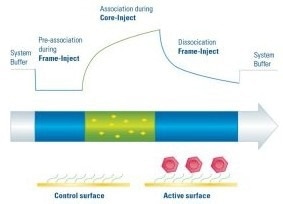
Image Credit: Bruker Life Sciences Mass Spectrometry